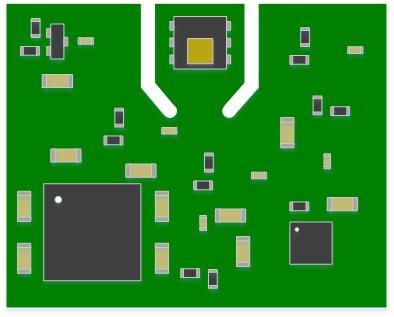Dear Sir
I don't misunderstanding about below describe in datasheet
is ti mean ,DAP connect a dummy PAD (without connect anything) from TOP layer to Bottom layer ??
It is recommended to isolate the sensor from the rest of the PCB by eliminating copper layers below the device
(GND, VDD) and creating a slot into the PCB around the sensor to enhance thermal isolation


